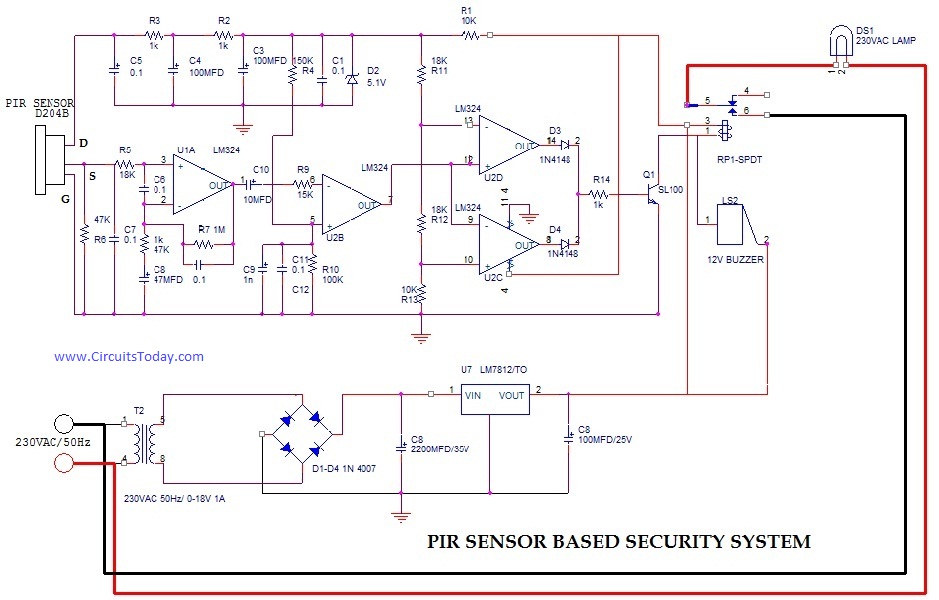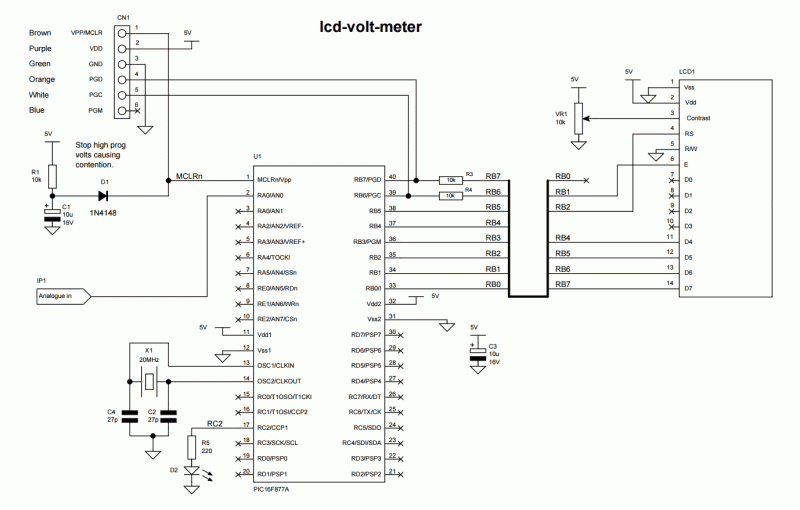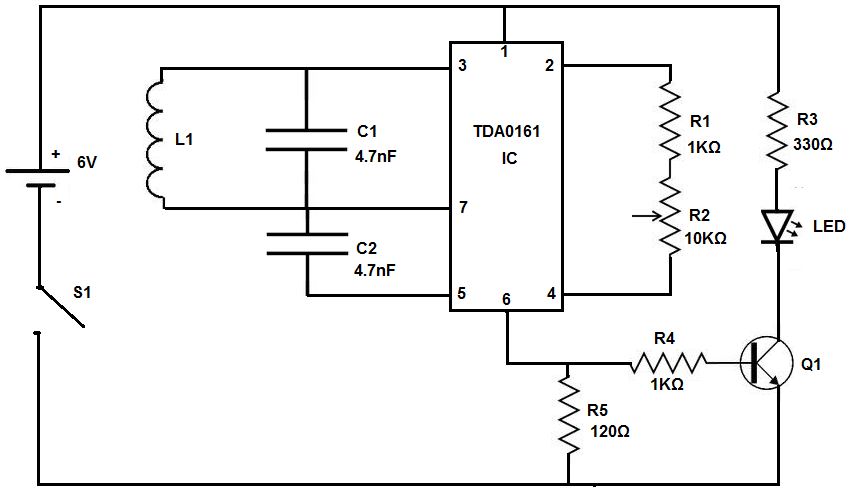
PIR Sensor Based Security System circuit diagramworkingapplications

PIR (Passive Infrared Radial) Sensor-Based Security System, circuit diagram, working, applications.
The PIR (Passive Infrared) sensor-based security system is designed to detect motion by measuring changes in infrared radiation emitted by objects in its vicinity, particularly warm bodies such as humans and animals. The system typically consists of a PIR sensor, a microcontroller or processing unit, and an alert mechanism such as an LED or alarm.
In a typical circuit diagram, the PIR sensor is connected to the power supply and interfaced with a microcontroller, which processes the sensor's output. The PIR sensor outputs a digital signal when motion is detected, which is fed into one of the microcontroller's input pins. The microcontroller is programmed to respond to this input by activating an alert mechanism.
Applications of this system are widespread, including residential security, commercial surveillance, and automation systems. The PIR sensor can be integrated into alarm systems, automated lighting controls, and other smart home devices, enhancing security and energy efficiency.
The circuit design may include additional components such as resistors, capacitors, and diodes to ensure proper functioning and stability. A common configuration involves using a resistor to limit current to the sensor and a capacitor to filter noise from the power supply. The microcontroller may also interface with other sensors or modules, such as cameras or GSM modules, to provide comprehensive monitoring and alert capabilities.
Overall, the PIR sensor-based security system represents an effective solution for detecting unauthorized access and ensuring safety in various environments.PIR (Passive Infrared Radial) Sensor Based Security System, circuit diagram,working,applications.. 🔗 External reference
The PIR (Passive Infrared) sensor-based security system is designed to detect motion by measuring changes in infrared radiation emitted by objects in its vicinity, particularly warm bodies such as humans and animals. The system typically consists of a PIR sensor, a microcontroller or processing unit, and an alert mechanism such as an LED or alarm.
In a typical circuit diagram, the PIR sensor is connected to the power supply and interfaced with a microcontroller, which processes the sensor's output. The PIR sensor outputs a digital signal when motion is detected, which is fed into one of the microcontroller's input pins. The microcontroller is programmed to respond to this input by activating an alert mechanism.
Applications of this system are widespread, including residential security, commercial surveillance, and automation systems. The PIR sensor can be integrated into alarm systems, automated lighting controls, and other smart home devices, enhancing security and energy efficiency.
The circuit design may include additional components such as resistors, capacitors, and diodes to ensure proper functioning and stability. A common configuration involves using a resistor to limit current to the sensor and a capacitor to filter noise from the power supply. The microcontroller may also interface with other sensors or modules, such as cameras or GSM modules, to provide comprehensive monitoring and alert capabilities.
Overall, the PIR sensor-based security system represents an effective solution for detecting unauthorized access and ensuring safety in various environments.PIR (Passive Infrared Radial) Sensor Based Security System, circuit diagram,working,applications.. 🔗 External reference





